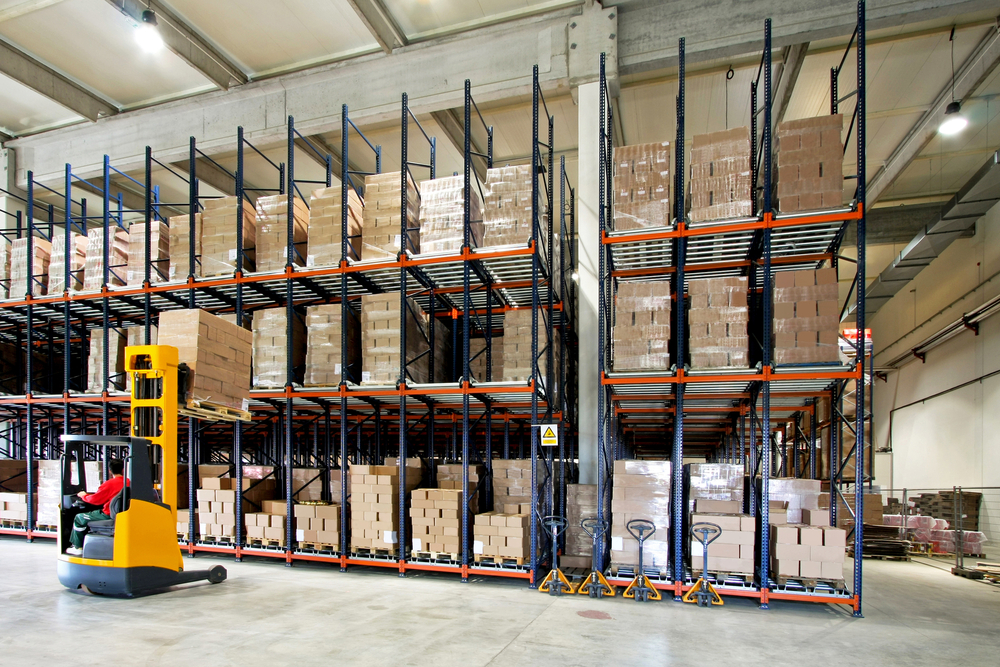There are many gears that turn the retail machine. Warehousing is one of the more important cogs. While it might not be the most intriguing of topics, inventory storage, warehousing, and everything in between the effects delivery to the customer is something worth understanding. Throughout the years, the ideas behind warehousing have remained consistent, but there are ever-evolving technologies and practices to consider as well.
So let’s get right to discussing everything you need to know about warehousing and the role it plays in the retail supply chain.
What is Warehousing?
Warehousing is a term that refers to the facility where goods are stored before being sold or delivered. Warehouses are, essentially, safe and secure storage solutions that allow for extra organization and celerity. There is also warehouse software, like SAP Business One, that can assist with inventory and warehouse management, finances, item packing, shipping and receiving.
But does warehousing only work for brick and mortar retail stores? No, it can work for ecommerce as well. For online-only businesses, the products are usually stored within a warehouse until they are ordered. At that point, the item is shipped directly from the warehouse to the consumer. Traditionally, retail items would be temporarily stored until the physical store needed to replenish stock.
The Keys to Warehousing Logistics
At the core of any business selling physical products is warehousing. There are three key parts to warehousing, which include warehouse management, warehouse management systems, and warehousing services or operations.
Here is an in-depth look at the three parts of warehousing logistics:
1. Warehouse Management
A warehouse needs to be strategically managed in order to function properly. Warehouse management includes training and overseeing the staff, safety and security practices, maintaining inventory and equipment, and keeping relationships with shipping carriers.
These responsibilities break down even further:
- Ensuring the best safety practices are being followed and that all safety gear is in good shape
- Maintaining compliance to requirements from various agencies
- Forecasting and handling projected volume and labor
- Keeping goods secure and available
- Completing warehouse audits when necessary
- Keeping a record of inbound and outbound shipments and collecting all documentation
- Providing instructions that clearly direct how to receive, unpack, retrieve, handle, and ship all items in the warehouse
- Setting up bins or other storage units to maximize productivity and efficiency
2. Warehouse Management Systems
Since running a warehouse can be overwhelming at times, there exists warehouse management system (WMS) software. This software comes with tools that give more oversight and control over warehouse operations. When using a WMS, you can automate certain processes, save time, and make more money. Warehouse management systems can also optimize workload distribution, shipping and receiving, inventory tracking, and more.
One reason why warehousing shouldn’t be done without a WMS is the real-time insight to everything happening within the warehouse. A decent warehouse management system enables you to react faster, so you can decrease downtime and effectively strengthen weaker areas of the warehouse.
3. Warehouse Services and Operations
When a warehouse is functioning properly, the movement of goods flows seamlessly. To get that, there are principles of warehousing that need to be followed. The principles include practices such as placing an SKU on every item received and sending it to the appropriate storage location.
Efficient warehouses have many benefits, such as:
- Productive staff
- Lower operating costs
- Happy customers
- On time shipping and receiving
- Optimized storage and space
- Effective use of equipment
Where Does Warehousing Fit into Business Operations?
Now that you are considering using a warehouse, you know how it can streamline your business and accelerate productivity. After all, there is a lot of gray space between the time an order for a product is made and that product getting delivered to its final destination. Those unknown steps often take place within a warehouse.
Here are three ways a warehouse plays a role in businesses:
- Shipping and Receiving: Any warehouse needs to run efficiently so that incoming orders can be accepted, processed, and sent out as soon as possible. Warehouses also know what products are coming, how many units of each, and where those items will be stored.
- Inventory Storage: Items all have designated spots within the warehouse where they can be stored for an extended period. Whenever that product is needed, employees know where to find it.
- Returns: Most businesses will deal with returns at some point, but this can be challenging when your business doesn’t have a physical location. This is why warehouses often become the place where returns are managed. The workers at the facility will double-check to make sure that the customer has done their part and will initiate the refund.
Get The Most Out of Warehousing
Any business that sells goods to customers will have need of a warehouse, regardless of that business’s size. A warehouse is the ideal place to store items until they have been purchased, and that will make your business far more efficient. Plus, you will be able to meet your customers’ needs more quickly.
If you want to get the most out of your warehouse, you’re going to need a partner like WiSys. Our unique tools and solutions, including our WMS Agility, can help you transform your warehouse, making it more efficient. Give us a call today to learn more about our warehouse management systems and other solutions.


